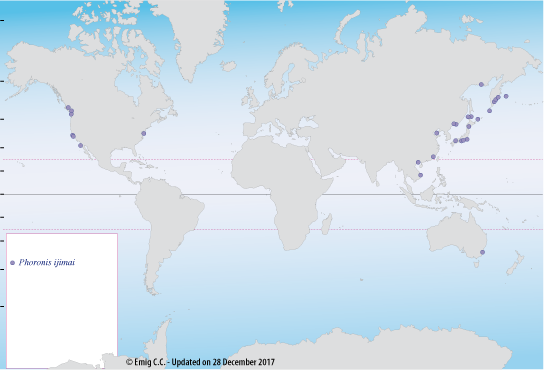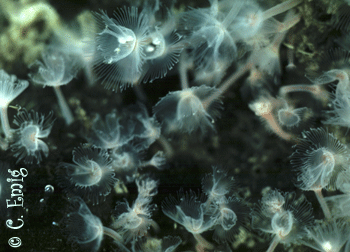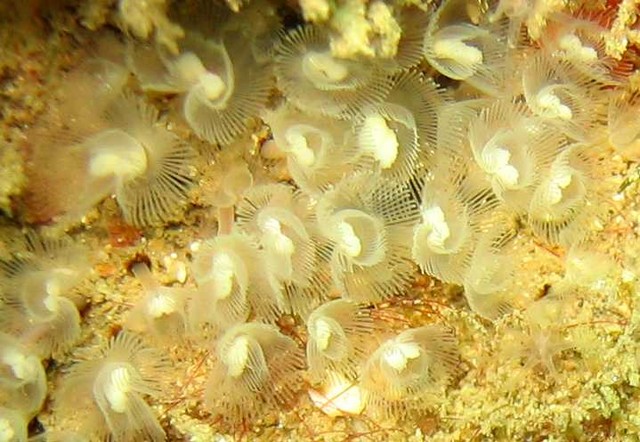|
Larva: Actinotrocha vancouverensis Zimmer, 1964 |
|
| Synonyms: Phoronis vancouverensis Pixell, 1912 Phoronis svetlanae Temereva & Malakhov, 1999 Phoronis savinkini Temereva et Neklyudov, 2017
|
|

° References of the most recent published diagnoses
| ||||||
| Diagnosis | ||||||
|
Last update: September 9, 2002
Extended specimens up to 120 mm long, diameter 0.5-2 mm.
Sexual reproduction hermaphroditic; embryos brooded in two masses by the nidamental glands of A type (i.e., on the floor of the lophophoral concavity and on the inner surface of the internal tentacles); small lophophoral organs. Asexual reproduction by transverse fission. Phoronis ijimai is incrusting on hard substrate (rocks, wood, soft substrate) in quiet environments or occasionally burrowing in hard substrate (calcareous rocks and algae, corals...) under water motion. This species extends between the intertidal zone to about 10 m depth.
Phoronis ijimai: the distribution is represented below on the map. Type-locality: Misaki, Tokyo (Japan) Last update: December 28, 2017  |

|
Emig C. C., 2003. Phylum Phoronida. In: Protostomes. Grzimek's Animal Life Encyclopedia, (ed. 2) vol. 2, 491-497. References on Phoronis ijimai |


Phoronis ijimai from San Juan Island
(Washington State, USA) just below the intertidal zone.
White dots in the lophophore are embryo masses.
Copyright Christian C. Emig

Phoronis ijimai from Los Angeles (California, USA) at 10 m depth.
White dots in the lophophore are embryo masses.
Copyright Scott Gietler

